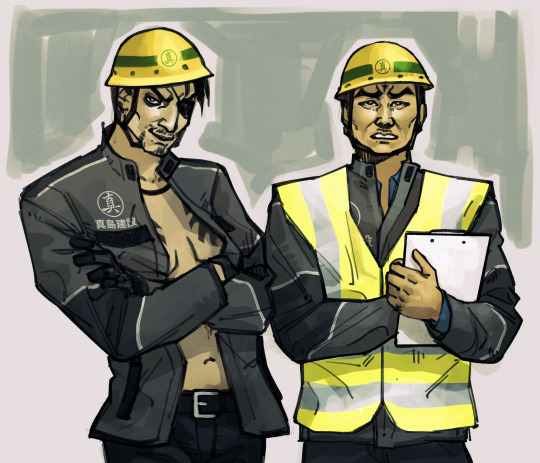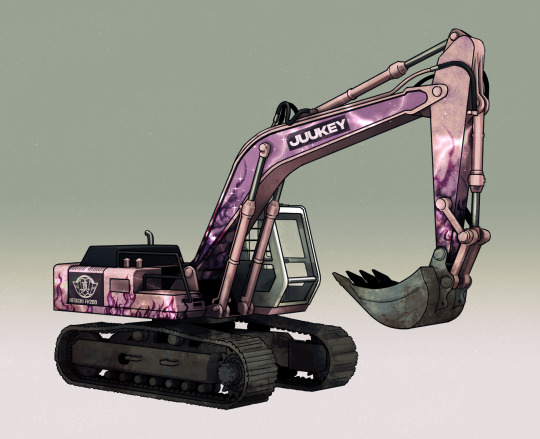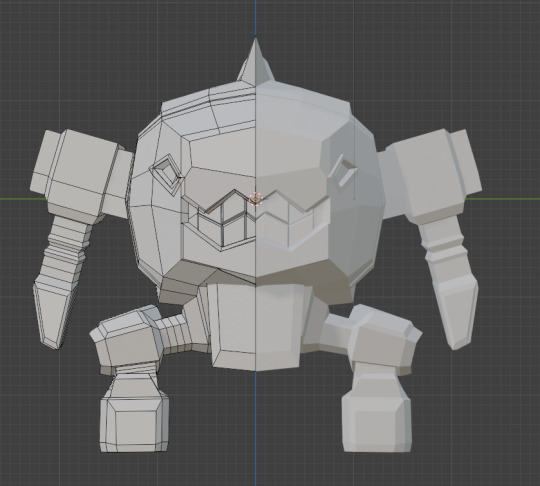#3D modeling for construction
Explore tagged Tumblr posts
Text
THINGS TO CONSIDER WHEN LOOKING FOR A 3D PRINTING WEBSITE
Introduction
In the rapidly evolving world of design and construction, 3D printing has surfaced as a transformative technology, particularly in architectural maquettes and 3D modeling for construction. As metropolises like Abu Dhabi continue to expand with innovative structures, the demand for precise, high-quality 3D published models has flooded. opting for the right 3D printing website is pivotal for professionals seeking to rephrase their digital designs into real prototypes. Whether it's for creating detailed architectural maquettes or functional construction elements, a dependable 3D printing service can significantly impact the success of a design. Let's explore crucial considerations to ensure you choose the most appropriate 3D printing website to meet your design’s specific requirements, concentrating on aspects like material selection, printing quality, cost, turnaround time, and the role of client support offered.
Pointers to Contemplate When Looking for a 3D Printing Website -
1. Understanding Your Design Needs
Before diving into the selection process, it's essential to have a clear understanding of your design conditions. 3D printing serves different endeavours, from Architectural Maquette and construction factors to jewellery and medical bias. Knowing whether you need a detailed, small-scale model or a larger, operational prototype will guide your decision. Different websites may specialize in different types of 3D printing, so align your design’s requirements with the service’s expertise.
2. Material Options and Quality
One of the most crucial aspects of 3D printing is the selection of accoutrements. For architectural maquettes, accoutrements that mimic the texture and colour of the real construction materials are frequently preferred. Websites that offer a wide range of material choices allow for more flexibility in achieving the asked aesthetic and practical properties. also, the quality of these accoutrements plays a vital part in the final design, impacting the durability, strength, and detail of the printed model.
3. Printing Technology and Precision
Not all 3D printing technologies are produced equal. The technology used can greatly affect the perfection, face finish, and strength of the printed object. For illustration, Fused Deposit Modeling( FDM) is generally used for its cost-effectiveness and speed, but it may not give the high resolution needed for detailed architectural maquettes. On the other hand, Stereolithography( SLA) and Selective Ray Sintering( SLS) offer exceptional detail and smooth finishes, making them ideal for intricate designs. Understanding the technology offered by the 3D printing website and its appropriateness for your design is pivotal in ensuring the most excellent possible result.
4. Customization Capabilities
Customization is frequently a crucial demand in 3D printing, especially for undertakings that involve unique designs or bespoke factors. Look for websites that offer comprehensive customization options, similar to the capability to choose precise material finishes, colours, and post-processing treatments. This is particularly important for architectural maquettes where accurate representation of textures and finishes can make a significant difference. A good 3D printing website should give a range of customization features that allow you to conform the final product to your exact specifications.
5. Cost and Value for money
While cost is always a consideration, it should be counted against the value given. Cheaper services might save money but could lead to lower-quality prints or longer reversal times, which can be harmful to your design’s success. Consider the total cost, including material, technology, customization, and shipping. Some websites may offer reductions for bulk orders or long-term contracts, which can be advantageous for ongoing designs. also, transparent pricing without hidden freights ensures that you can budget accurately for your 3D printing requirements.
6. Time taken for Delivery
Time is frequently a critical factor in design operations. The speed at which a 3D printing website can produce and deliver your order is pivotal, particularly for designs with tight deadlines. Some services offer expedited printing and shipping options for an added figure, which can be a lifesaver in time-sensitive situations. still, it's also important to balance speed with quality; rushing a print can occasionally lead to mistakes or faults. ensure that the website can meet your timeline without compromising the quality of the final product.
7. Client Support and Communication
Good client support is essential when working with a 3D printing service. Whether you need help with file preparation, material selection, or tracking your order, responsive and knowledgeable client support can make a significant difference. Look for websites that offer multiple communication channels, similar to live chat, phone assistance, and email, and that give prompt responses to inquiries. client support can also be a pivotal factor when dealing with issues similar to print faults or delivery problems, so guarantee the service you choose has a strong prestige in this area.
8. Character and Reviews
In an industry where the final product’s quality can vary significantly between providers, character matters. Looking for a 3D printing website’s character through client reviews, case studies, and other clients can give precious perceptivity to the service’s trustability and the quality of its prints. Pay attention to feedback regarding print quality, client service, and adherence to delivery times. Websites with a strong portfolio of successful designs, particularly in your area of interest like architectural maquettes or 3D modelling for construction, are more likely to meet your prospects.
9. Post-Processing and Finishing Services
Post-processing can significantly enhance the quality and appearance of the 3D published models. Whether it’s sanding, painting, or adding other finishes, these services are pivotal for achieving a professional-grade final product. For architectural maquettes, post-processing might involve adding textures, and colours, or indeed integrating the model with other accoutrements. Assure the 3D printing website offers the level of finishing you want and whether these services are performed with perfection and attention to detail.
11. Environmental Concerns
As sustainability becomes increasingly important in all areas, the environmental impact of 3D printing is a consideration worth noting. Some 3D printing websites prioritise eco-friendly practices, similar to using biodegradable accoutrements, reusing waste, and employing energy-effective processes. However, look for services that align with these values, If sustainability is a priority for your design. This is particularly applicable in metropolises like Abu Dhabi, where sustainable construction practices are getting more current. 3D printing abu dhabi is changing the entire industry scenario by allowing for rapid modelling and tailored production resolution.
Conclusion
Choosing the correct 3D printing website is a pivotal step in guaranteeing the success of your design, whether it involves creating an intricate architectural maquette or producing functional construction elements. By considering factors such as material options, publishing technology, customization capabilities, cost, and client support, you can make an informed decision that aligns with your design’s specific requirements. In dynamic and fleetly growing regions like Abu Dhabi, where innovation in construction is at the front, having access to a dependable and high-quality 3D printing service is more important than ever. Take the time to probe and assess implicit providers, ensuring that they not only meet your current conditions but can also support your future ideas in the innovative world of 3D modelling and printing.

0 notes
Text
Tip for adult artists if your focus is improving your anatomy and drawing bodies that feel more grounded in a space, genuinely one of the best exercises for that is to draw smut.
You don't have to post it. Hell, you can burn it when you're done for all it matters. But hardly anything will give you more of an understanding of a realistic human body interacting in 3D space when you smush two or more of them together.
#art advice#18+ art#obviously not the only way to go about it#but I definitely learned more from drawing smut than from gesture drawings alone#if you're adverse/repulsed by images then non-sexual intimacy would work just fine#I'll admit references are hard cause I hate searching for irl stuff#but worst case scenario 3D model poser apps can help you find the general positions of things and you can pose however you need to#at this point I've been practicing construction a lot so I can just draw from my own understanding of anatomy#and I'll fill in the rest by using reference which can often just be my own photos or looking at my own hands/mouth/etc#added bonus is if you do it enough that embarrassment goes away eventually#but don't be upset with yourself if you are painfully shy at the start that's perfectly normal#ok sorry this turned into a ramble#artists of tumblr#demirambles
79 notes
·
View notes
Text


majima construction doodles
#my art#yakuza#ryu ga gotoku#majima goro#nishida#im sooo obsessed with this whole construction thing u dont understand#look at this cool ass excavator#i believe the 3d model i used as a base was ripped from carmageddon 2......
656 notes
·
View notes
Text
Daud Smoking

yes hello i have made art again please look at his dumb moping face
#dishonored#whale tag#daud#adozensart#art#ya i think for art attempt number 2 thats pretty good#i will say i think i learned my lesson in regards to black outlining#next try we'll be mixing it up#also my deepest gratitude to whoever made a whole movable 3d bonecharm model#absolute life saver in figuring out that perspective#i'm not a 100 percent on the face#but if i try to perfect that now i will never get done#so i'm just gonna move on with practicing#also windows suck ass holy shit what is that construction#but why yes those letter fragments are from an The Outsider Walks Among Us graffiti hehe
44 notes
·
View notes
Text
Heyo, Hi, Hello Its the guy who you occasionally see in your feed that you might reblog, always with a different medium of art.
I watched Gurren Lagann recently and I love how the Gunmen (the mechs) are shaped, so weird and bean shaped. Many are animal shaped so I made this fish shaped one,



Its somewhat based on the dunkleosteus. I may or may not have another character based on this prehistoric fish thing.
anyway, if you like this, I will be printing the ill guy. So stay tuned lol.


or don't, so quickly scroll past, Tumblr will recommend me to you, and you have to look at my post. (a terrible fate)


anyhow, this image is supposed to be a gif of multiple Gunmen, but if it didn't load it's a still of my fav gunmen, "King Kittan" for reference to how they kind of look.
once again I recommend Gurren Lagann great show wow.
#art#my art#adhd fueled art#oc artwork#gurren lagann#tengen toppa gurren lagann#blender#3d model#3d art#paint 3d#low poly#I'll take some constructive criticism blender people#im learning#king kittan
16 notes
·
View notes
Text
slowly but surely figuring out how extremely basic modeling works by importing them and playing around with them. would love to move up to making models one day
#''made'' my inkling in blender :]#would love to model my inkling techno's hair one day but i think im very far away from that#i also understand like. constructing polygons n stuff. but i DO NOT understand how you make the different textures#i know that bitmaps exist and can be used but how do you make one-#maybe in a few years i'll understand lol. 3d modeling seems like so much fun it's just hard to start out#chat#hi im alive i had a really shit day tho so i've done absolutely nothing
4 notes
·
View notes
Text

BIM Careers: Building Your Future in the Digital AEC Arena
The construction industry is undergoing a digital revolution, and BIM (Building Information Modeling) is at the forefront. It's no longer just a fancy 3D modeling tool; BIM is a collaborative platform that integrates data-rich models with workflows across the entire building lifecycle. This translates to exciting career opportunities for those who can harness the power of BIM.
Are you ready to step into the octagon of the digital construction arena? (Yes, we're keeping the fighting metaphor alive!) Here's a breakdown of the in-demand skills, salary ranges, and future prospects for BIM professionals:
The In-Demand Skillset: Your BIM Arsenal
Think of your BIM skills as your tools in the digital construction toolbox. Here are the top weapons you'll need:
BIM Software Proficiency: Mastering software like Revit, ArchiCAD, or Navisworks is crucial. Understanding their functionalities allows you to create, manipulate, and analyze BIM models.
Building Science Fundamentals: A solid grasp of architectural, structural, and MEP (mechanical, electrical, and plumbing) principles is essential for creating BIM models that reflect real-world construction realities.
Collaboration & Communication: BIM thrives on teamwork. The ability to collaborate effectively with architects, engineers, and other stakeholders is paramount.
Data Management & Analysis: BIM models are data-rich. Being adept at data extraction, analysis, and interpretation unlocks the true potential of BIM for informed decision-making.
Problem-Solving & Critical Thinking: BIM projects are complex. The ability to identify and solve problems creatively, while thinking critically about the design and construction process, is invaluable.
Salary Showdown: The BIM Payday Punch
Now, let's talk about the real knock-out factor – salaries! According to Indeed, BIM professionals in the US can expect an average annual salary of around $85,000. This number can vary depending on experience, location, and specific BIM expertise. Entry-level BIM roles might start around $60,000, while BIM Managers and BIM Specialists with extensive experience can command salaries exceeding $100,000.
Future Forecast: A Bright BIM Horizon
The future of BIM is bright. The global BIM market is projected to reach a staggering $8.8 billion by 2025 (Grand View Research). This translates to a continuous rise in demand for skilled BIM professionals. Here are some exciting trends shaping the future of BIM careers:
BIM for Specialty Trades: BIM is no longer just for architects and engineers. We'll see increased adoption by specialty trades like HVAC technicians and fire protection specialists.
Integration with AI and Machine Learning: Imagine BIM models that can predict potential issues or suggest optimal design solutions. AI and machine learning will revolutionize BIM capabilities.
VR and AR for Enhanced Collaboration: Virtual Reality (VR) and Augmented Reality (AR) will allow for immersive BIM model walkthroughs, facilitating better collaboration and design communication.
Ready to Join the BIM Revolution?
The BIM landscape offers a dynamic and rewarding career path for those with the right skills. If you're passionate about technology, construction, and shaping the future of the built environment, then BIM might be your perfect career match. So, hone your skills, embrace the digital revolution, and step into the exciting world of BIM with Capstone Engineering!
#tumblr blogs#bim#careers#buildings#bim consulting services#bim consultants#construction#aec#architecture#3d modeling#bim coordination#consulting#3d model#bimclashdetectionservices#engineering#MEP engineers#building information modeling#oil and gas#manufacturing#virtual reality#collaboration#bim services#uaejobs
2 notes
·
View notes
Text

Erasmus is one of the topmost Outsourcing architectural 3d visualization and rendering company based out of India, offering graphics rich 3D Rendering Services at affordable prices.
#bim services#civilengineering#bim technology#autocad#2d drafting services#constructioncompany#3d render#rendering#3d bim modeling services#3d cad modeling#data entry#architecture#civil construction#renovation#building#wednesday motivation
3 notes
·
View notes
Text
Scan to BIM Explained: How It Helps Small Projects Succeed

Introduction
In the fast-evolving AEC industry, Scan to BIM has emerged as a game-changer—especially for small projects. Combining 3d laser scanning in construction with efficient Building Information Modelling, this streamlined workflow accelerates project delivery, enhances accuracy, and minimizes rework. In this blog, we’ll explore how scan to bim works, why it's a perfect fit for tight-knit ventures, and how to maximize its benefits using scan to bim services, scan to bim modeling services, and more.
1. What Is Scan to BIM?
Scan to BIM is the process of converting reality-captured data—typically from 3d laser scanning bim—into intelligent 3D digital models. The workflow begins with collecting a dense point cloud to BIM and finishes with a fully detailed model in tools like Revit. This technique fits seamlessly into the bim process, advancing traditional drafting with real-world accuracy.
Key components include:
3d scan to bim: Capturing existing conditions via laser scans
Scan to bim modeling services: Converting scans into intelligent BIM models
Clash detection: Leveraging Revit clash detection to spot design collisions early
Explore detailed benefits of Scan to BIM in our in‑depth article on What Is Scan to BIM? Benefits Explained.
2. Why Small Projects Need Scan to BIM
Faster Turnarounds
For small-scale housing, retail fit-outs, or renovations, scan to bim services significantly cuts surveying time. A quick 3d laser scanning in construction session can generate a point cloud to bim ready for modeling, saving days compared to manual measurements.
Better Accuracy & Less Rework
Manual measurements are often prone to errors. With scan to bim modeling services, you obtain exact measurements, helping prevent costly mistakes during construction. Clash detection in the bim process—particularly Revit clash detection—helps identify spatial conflicts early, avoiding delays.
Cost‐Effective Precision
While a full BIM may seem excessive for small projects, scan to bim offers scalable accuracy: while capturing key structural and utility details, you can leave minor elements less defined. This balances ROI without inflating budgets.
Dive into how BIM applies to small‑scale projects, including pros, cons, and smart strategies, in our BIM for Small Projects – Pros, Cons, and Smart Insights guide.
3. The Scan to BIM Workflow: Step by Step
3D Laser Scanning in Construction
Use portable scanners to perform 3d laser scanning bim, capturing millions of data points that form a point cloud.
Point Cloud to BIM
Experts working with scan to bim modeling services translate the cloud into a structured Revit model with layered components like walls, doors, MEP, and more.
3D Modeling BIM
The converted model becomes a dynamic, editable digital twin that fits directly into your bim process.
Clash Detection & BIM AR
In Revit, run clash detection routines. For presentation or stakeholder engagement, deploy BIM AR tools to overlay the model on-site using Augmented Reality.
Design / Build Use
Contractors and engineers use the model for sequencing, cost calculations, and fabrication. It supports future renovation plans or O&M deliverables.
4. Advantages of Scan to BIM on Small Projects
Speed: A single 2‑hour scan session can yield a 3d scan to bim input within days.
Precision: High‑fidelity 3D modeling BIM reduces errors and field revisits.
Accessibility: Scan to BIM services make high-end AEC workflows available to smaller clients.
Clash Avoidance: Revit clash detection flags interface issues before construction begins.
Value Add: Offering BIM AR walkthroughs impresses clients and helps secure future contracts.
5. Challenges & Smart Insights
Budget Sensitivity: While cost-effective, small budgets limit scan durations and level-of-detail scope.
Expertise Required: Small teams must either adopt scan to bim services or train for in-house point cloud to BIM skills.
File Management: Large scan data sets need robust storage and carefully managed 3d modeling BIM workflows.
Client Education: Stakeholder briefings help them understand benefits from 3d laser scanning bim vs. traditional methods.
Smart Insights:
For very small projects, limit scans to essential spaces and skip redundant modeling.
Use freelance experts or hybrid teams to keep expenses in check.
Use BIM AR demos to gain project stakeholder buy-in early.
6. Real‑World Applications & Tips
Residential renovation: Scan to BIM allows precise retrofit design without manual measurements.
Retail fit‑outs: Rapid 3d scan to bim lets short‑turnover tenants update fixtures precisely.
Historical building rehab: Dense point cloud to BIM captures ornamental detail for preservation projects. Please check more in our detailed How Scan to BIM Increases Accuracy in Restoring Historic Structures? guide
Tips:
Choose surveys with at least 5‑10 mm accuracy for small structural projects.
Use local scan to bim modeling services for cost-effective expertise.
Integrate with facility management systems post-handover to extend BIM’s value.
Conclusion
For small‑scale AEC ventures, Scan to BIM enables professional-grade outcomes with minimal time, cost, and risk. Leveraging 3D laser scanning BIM, point cloud to BIM, scan to bim services, and automated Revit clash detection, teams can enjoy accurate models, rapid turnaround, and smart insights—all previously reserved for larger projects.
By using scan to bim modeling services and embracing technologies like BIM AR, small projects can stand out and thrive in today’s competitive AEC space.
SmartCADD empowers your small‑project success through expert scan to bim, 3D modeling BIM, point cloud to BIM, and overall digital transformation.
Let’s turn your next small project into a BIM‑powered success story—connect with SmartCADD today!
#Scan to bim#scan to bim services#scan to bim modeling services#3d laser scanning bim#3d scan to bim#point cloud to bim#bim ar#3d laser scanning in construction#scan to bim revit#BIM#building information modelling#AEC industry#3D modeling bim#Clsh detection#bim process#revit clash detection
0 notes
Text
heeeelp I’m being tormented by visions again
#please I have asks to answer and cars to draw#this one’s been floating around in my mind for awhile too#only now I’m seeing it full 3D render with sound (COOKED)#I need to storyboard this shit and get it out of me even if I never finish the full animation#originally I saw this in a comic format#but I need absolute control of what the viewer sees and when for it to work#plus I get to animate scrambling construction equipment on ones this way yayyyy (masochism)#I’ve got to finish those designs so I can get to 3D modeling#cars… focus on the cars first… please…#ok thats all for now see you next post bye bye
0 notes
Text
#bim/vdc#bim vs vdc#virtual design and construction#3d modeling#building information modeling services
0 notes
Text
Vertical Garden Building: Growing a Greener Future One Wall at a Time

The Vertical Garden Building is best suited to this rising urban density. It is also known as the green walls or living walls. It is a perfect blend of innovation, sustainability, and aesthetics. It converts building facades and walls into a healthy ecosystem.
What Is a Vertical Garden?
A Vertical Garden, or green wall, is a method of growing plants around or within a building wall with the use of suspended frames and panels. These panels and frames can be made from plastic, synthetic fabric, metal grids, and polystyrene. These panels are slightly detached from the building walls so that proper ventilation can be done, and they do not affect the waterproofing system of the building.
This idea was first coined by a French botanist, Patric Blanc, in 1990, and the concept was first used in the Quai Branly Museum. Today, vertical gardens are very popular worldwide, they are used in schools, residential apartments, commercial buildings, hotels, airports, etc.
What are the Benefits of a Vertical Garden
Vertical gardens not only offer a great aesthetic look, but they also help to control the inner and outer climate of the buildings. It helps to improve the air quality and offer high sound insulation.
1. Environmental Benefits
Vertical gardens act as natural air purifiers. They remove the dust particles and other polluted substances from the air and provide fresh air to residents. Plants reduce the CO2, increase oxygen, and thus improve the air quality.
2. Thermal and Acoustic Insulation
In summer, green walls absorb the heat coming into the building and maintain the building’s inner environment cool. While in winter it acts as a thermal buffer, maintaining the inner environment warm.
Read more...
#3d bim modeling services#building information modeling services#bim consulting services#mep bim services#bim services#construction#bimcoordination#bim service providers#bim consulting firm#building information modeling
0 notes
Text
The Impact of 3D Laser Scanning in Construction and Architectural Documentation
In the field of construction and architecture, precision is more than a goal — it’s a necessity. As projects grow in complexity and demands for efficiency increase, traditional surveying methods often fall short in meeting these modern challenges. That’s where 3D laser scanning has stepped in, offering a high-accuracy solution for documenting both new builds and existing structures.
Whether used during the early planning phases or to support detailed restoration, laser scanning enables teams to make confident decisions based on real, measurable data. For industries where accuracy drives outcomes, this technology has become a vital part of the workflow.
Enhancing Building Documentation with Laser Scanning
For many professionals — architects, engineers, and facility managers among them — understanding a structure’s current condition is critical. When blueprints are outdated or missing entirely, assumptions can lead to costly errors. 3D laser scanning for buildings offers a clear alternative by capturing every detail of the structure as it exists today.
Using this method, millions of measurements are recorded in minutes, creating a comprehensive digital model of the site. These point cloud files can be transformed into detailed 3D representations or Building Information Models (BIM). The result is a precise foundation for design work, structural assessments, and system planning.
Projects that use laser scanning early often benefit from smoother collaboration between stakeholders. Since everyone has access to the same data, teams can align faster, work more efficiently, and avoid misunderstandings that lead to rework or delays.
Laser Scanning’s Role in Construction Environments
Construction sites are dynamic, with variables that shift from day to day. 3D laser scanning construction workflows give professionals a way to track progress and verify that construction is proceeding as designed. By comparing laser scans against digital plans, deviations can be spotted and addressed before they evolve into larger problems.
Contractors also benefit from faster site documentation. Traditional surveying might take days and disrupt ongoing work. In contrast, laser scanning can be completed with minimal interference, even while operations continue. This ability to work around active environments makes it a practical choice for high-volume or tightly scheduled jobs.
The technology is especially useful when working with prefabricated components or coordinating multiple trades. Having an exact record of site conditions helps minimize installation errors and supports seamless integration of building systems.
Preserving Historic Structures with Digital Precision
Older buildings present their own set of challenges. Many have limited or no accurate documentation and their fragile nature makes them unsuitable for invasive surveying techniques. 3D laser scanning for historic buildings offers a non-contact approach to capture every element of the structure — down to the texture of a façade or the curvature of decorative molding.
This digital record allows preservation teams to assess damage, plan restorations, and replicate architectural details with remarkable accuracy. By creating a virtual twin of a historic site, teams can work confidently without compromising the physical structure itself. The scans also serve as permanent records that can be used for future reference or educational purposes.
PMC’s Expertise in Laser Scanning
Production Modeling Corporation (PMC) supports industrial, architectural, and construction teams with high-accuracy 3D laser scanning services. With over 40 years of experience and a team of more than 900 professionals, PMC delivers precise, project-ready data for a wide variety of applications.
From detailed scans of industrial plants to documentation of complex building layouts, PMC ensures that clients receive the insights they need to move projects forward efficiently. Their scanning services support digital transformation strategies, facility planning, and quality assurance in construction and preservation work.
Conclusion
3D laser scanning has become a cornerstone in building documentation, construction oversight, and historic preservation. Its ability to capture accurate data quickly, safely, and in detail makes it a powerful tool across multiple industries.
For organizations looking to improve their planning, reduce uncertainty, and preserve architectural integrity, laser scanning services — like those offered by PMC — provide a reliable and forward-looking solution.
#3D laser scanning#Production Modeling Corporation (PMC)#3D laser scanning for buildings#3D laser scanning construction#3D laser scanning for historic buildings
0 notes
Text





#construction#laser scanning#3d laser scanning#virginia#bim#3d scanning#building information modeling#building design#as built drawing#as built documenation
0 notes
Text
Streamline Construction Workflow with BIM Engineers

Construction workflow is complex and demands keen attention to detail. Which is why BIM engineers help in ensuring the seamless integration and accurate workflow for other AEC professionals. Continue reading further how BIM engineers play a crucial role in AEC.
#bim modeling services#3d bim modeling#bim services#bim architectural services#bim services provider#revit families creation#point cloud to bim services#revit modeling services#construction documentation services#hire a bim specialist
2 notes
·
View notes